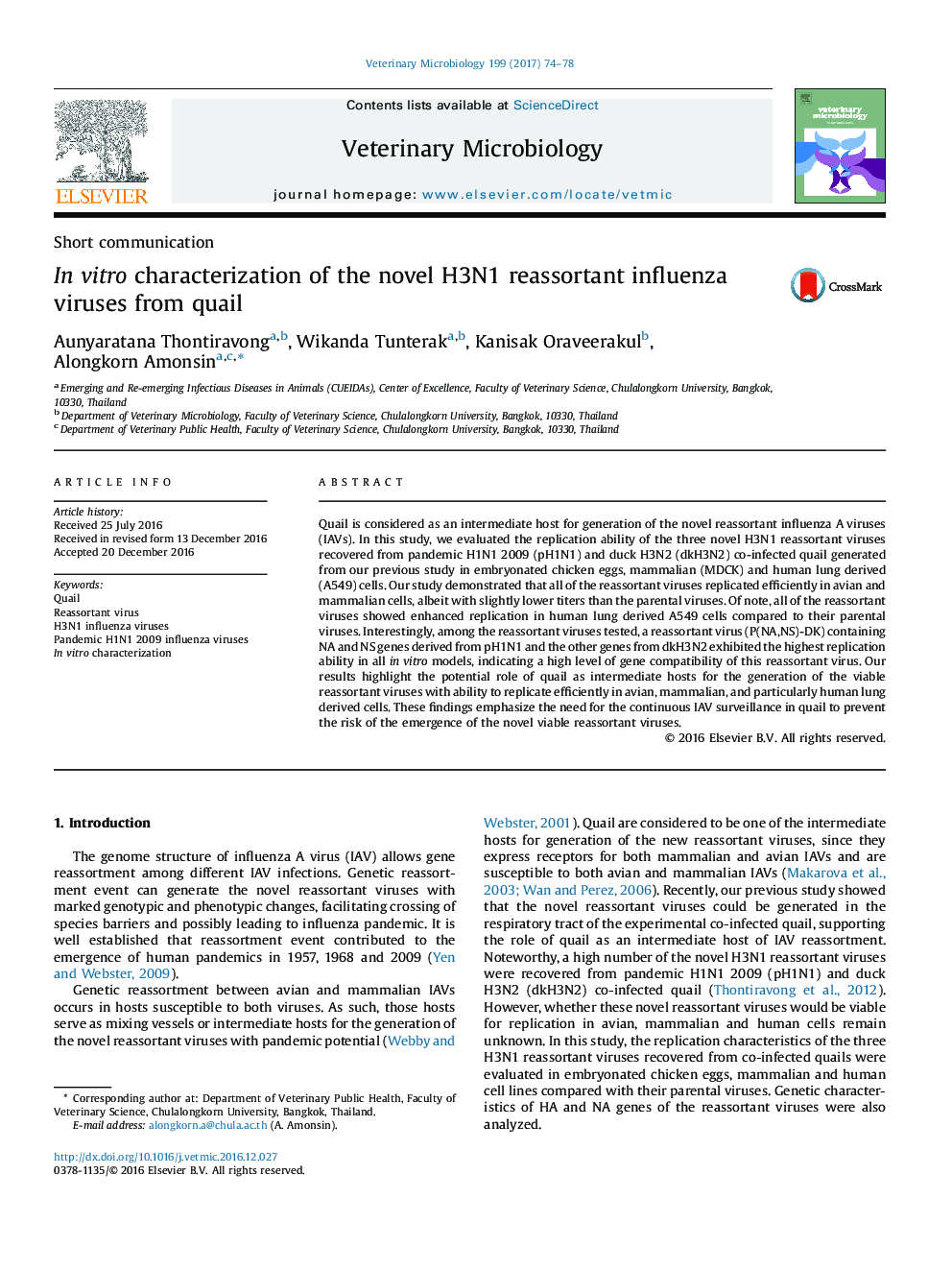| Article ID | Journal | Published Year | Pages | File Type |
|---|---|---|---|---|
| 5545424 | Veterinary Microbiology | 2017 | 5 Pages |
Abstract
Quail is considered as an intermediate host for generation of the novel reassortant influenza A viruses (IAVs). In this study, we evaluated the replication ability of the three novel H3N1 reassortant viruses recovered from pandemic H1N1 2009 (pH1N1) and duck H3N2 (dkH3N2) co-infected quail generated from our previous study in embryonated chicken eggs, mammalian (MDCK) and human lung derived (A549) cells. Our study demonstrated that all of the reassortant viruses replicated efficiently in avian and mammalian cells, albeit with slightly lower titers than the parental viruses. Of note, all of the reassortant viruses showed enhanced replication in human lung derived A549 cells compared to their parental viruses. Interestingly, among the reassortant viruses tested, a reassortant virus (P(NA,NS)-DK) containing NA and NS genes derived from pH1N1 and the other genes from dkH3N2 exhibited the highest replication ability in all in vitro models, indicating a high level of gene compatibility of this reassortant virus. Our results highlight the potential role of quail as intermediate hosts for the generation of the viable reassortant viruses with ability to replicate efficiently in avian, mammalian, and particularly human lung derived cells. These findings emphasize the need for the continuous IAV surveillance in quail to prevent the risk of the emergence of the novel viable reassortant viruses.
Related Topics
Life Sciences
Agricultural and Biological Sciences
Animal Science and Zoology
Authors
Aunyaratana Thontiravong, Wikanda Tunterak, Kanisak Oraveerakul, Alongkorn Amonsin,
